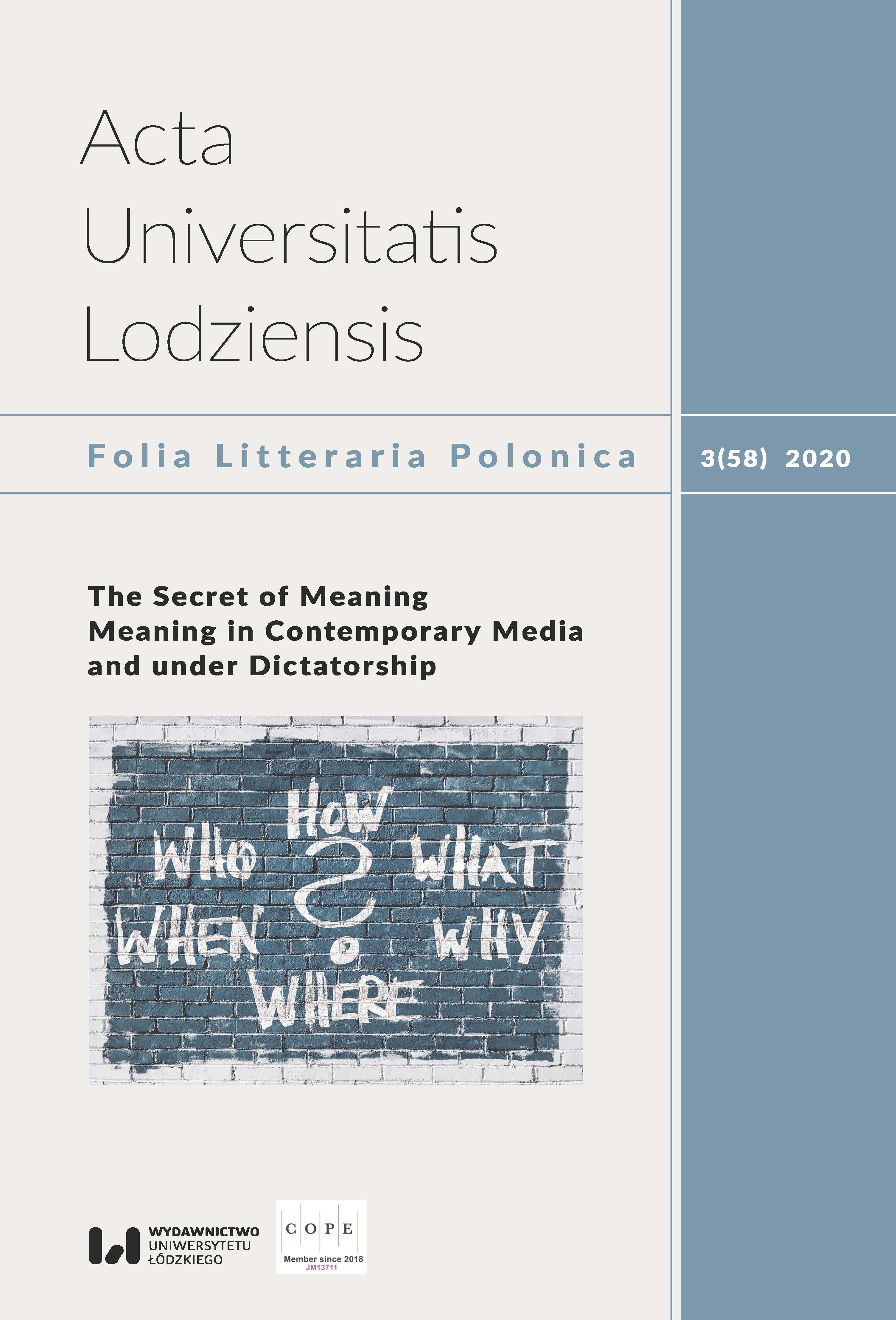A comparison between the concept of Newspeak in George Orwell’s Nineteen Eighty-Four: A Novel and the way of thinking about language in C.S. Lewis’s That Hideous Strength
A comparison between the concept of Newspeak in George Orwell’s Nineteen Eighty-Four: A Novel and the way of thinking about language in C.S. Lewis’s That Hideous Strength
Author(s): Andrzej WicherSubject(s): Language and Literature Studies, Novel
Published by: Wydawnictwo Uniwersytetu Łódzkiego
Keywords: G. Orwell; C.S. Lewis; totalitarianism; dehumanisation; language degeneracy; artificial language; experimenting with language
Summary/Abstract: The aim of the article is to investigate some of the possible sources of inspiration for Orwell’s concept of the artificial language called Newspeak, which, in his novel Nineteen Eighty-Four, is shown as an effective tool of enslavement and thought control in the hands of a totalitarian state. The author discusses, in this context, the putative links between Newspeak and really existing artificial languages, first of all Esperanto, and also between Orwell’s notion of “doublethink”, which is an important feature of the totalitarian mentality, and Czesław Miłosz’s notion of “ketman”, developed in his book The Captive Mind. But the main emphasis is on the connection between Orwell’s book and the slightly earlier novel by C.S. Lewis, That Hideous Strength. It is well known that Orwell knew Lewis’s book and expressed his mixed feelings about it. There are many specific, though far from obvious, similarities between the two books, but what seems to have been particularly inspiring for Orwell was Lewis’s vision of a thoroughly degenerate language that is used for political manipulation rather than for communication.
Journal: Acta Universitatis Lodziensis. Folia Litteraria Polonica
- Issue Year: 58/2020
- Issue No: 3
- Page Range: 477-498
- Page Count: 22
- Language: English

